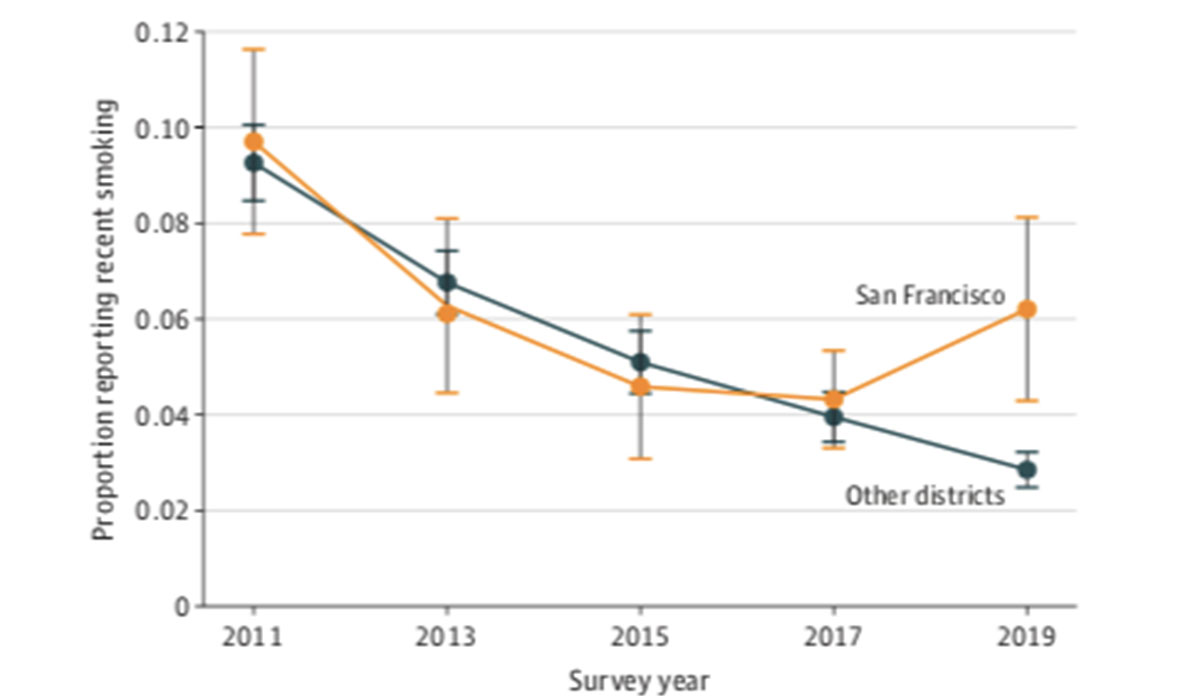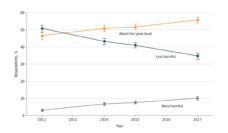If you’ve watched any television shows marketed to teenagers lately you’ve probably seen ads encouraging young people to stop using tobacco products. The term “tobacco products” may trigger memories of pungent scents or the signature smoker’s cough. But it may also remind you of bubble gum and honey.
The Centers for Disease Control and Prevention acknowledge that e-cigarettes may be less harmful than traditional cigarettes and may aid in cessation. However, research also shows that flavoring e-cigarettes increase chances of teenagers using them. Flavored e-cigarettes may also lead some youth into traditional cigarette use who would not have used them otherwise.
E-cigarette use increased 900% between 2011 and 2015 among US middle and high school students. Use decreased in 2015-2017 for the first time since e-cigarettes hit the market in 2006. However, the dip was brief and e-cigarette use among students rose again quickly. The increase in e-cigarette use has been so tremendous that the FDA has named it an epidemic.
Dr. Abigail Friedman’s research measures the impact of San Francisco’s 2017 flavored tobacco product ban by comparing a sample of San Francisco residents, aged 18 to 34 years, who recently smoked cigarettes to residents of other metropolitan areas without the ban. The graph illustrates San Francisco’s increase in young adults smoking combustible cigarettes after the ban compared to the downward trend of the other regions without the ban.
While the San Francisco flavor ban policy applied to flavored combustible cigarettes, it also took flavored vaping products off store shelves as well. The restriction of access to flavored electronic nicotine delivery systems, such as vape pens and e-cigarettes may have inadvertently encouraged traditional cigarette use as a substitution. Flavors bans and barriers to electronic nicotine delivery systems do not stop kids from smoking, they just make access to traditional cigarettes relatively easier. These findings suggest that comprehensive local flavor bans, by themselves, cannot sharply reduce the use of tobacco products among young adults.
Databyte via Friedman AS. A Difference-in-Differences Analysis of Youth Smoking and a Ban on Sales of Flavored Tobacco Products in San Francisco, California. JAMA Pediatrics. 2021;175(8):863–865.














